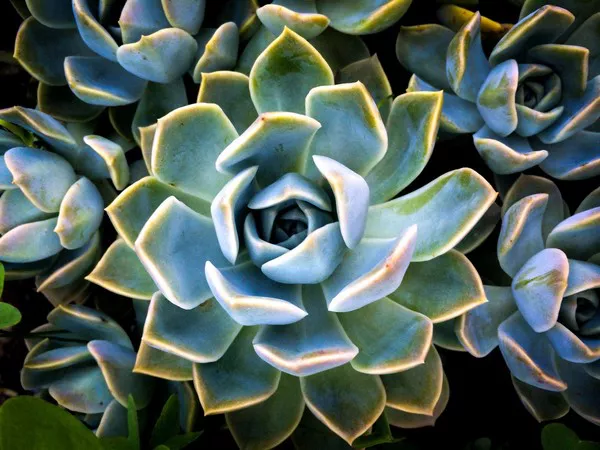Transplanting succulents outdoors can be an exciting and rewarding experience for any plant enthusiast. Whether you are starting a new succulent garden, expanding your existing one, or rescuing succulents from cramped containers, proper transplanting techniques are essential for ensuring the health and vitality of your plants. In this article, we will provide a comprehensive step-by-step guide on how to transplant succulents outdoors to help you achieve successful repotting.
1. Understanding the Right Time for Transplanting
Before diving into the transplanting process, it’s crucial to choose the right time for the task. The ideal time for transplanting succulents outdoors depends on the specific climate and the succulent species.
2. Choosing the Transplanting Location
Selecting the right location for your transplanted succulents is vital for their long-term health and growth. Consider the following factors when choosing a spot:
Sunlight: Most succulents thrive in bright, indirect sunlight, but some can tolerate full sun. Observe the light conditions in your garden and choose a location that suits the sunlight preferences of your succulents.
Drainage: Succulents are highly susceptible to root rot if they sit in waterlogged soil. Choose a location with well-draining soil to prevent excess moisture from causing harm.
Climate Considerations: If your climate experiences extreme cold or heavy rainfall, consider planting succulents in containers that can be moved indoors during adverse conditions.
3. Preparing the Transplanting Site
Prepare the transplanting site in advance to facilitate a smooth repotting process. Follow these steps:
Clear the Area: Remove any weeds, debris, or competing plants from the chosen spot to prevent them from overshadowing or crowding your succulents.
Soil Preparation: Ensure the soil in the transplanting area is well-draining and amend it if necessary. You can add coarse sand, perlite, or pumice to improve drainage.
4. Proper Transplanting Techniques
Now that you’ve selected the right time and location for transplanting, it’s time to begin the process:
Watering the Succulents: Water your succulents a few days before transplanting to ensure they are well-hydrated but not waterlogged during the process. Moist soil makes it easier to remove the plants from their pots without damaging their roots.
Gently Remove the Succulents: Carefully remove the succulents from their pots. To do this, place your hand over the top of the pot and gently turn it upside down. Tap the bottom of the pot to release the succulent. If the plant resists, gently squeeze the sides of the pot to loosen the root ball. Avoid pulling the succulent from its stem or leaves, as this can cause damage.
Inspecting the Roots: Examine the roots of the succulent for signs of overgrowth or root-bound conditions. If the roots have wrapped around the root ball, gently tease them apart with your fingers.
Trimming Damaged Roots: If you notice any damaged or rotting roots during inspection, trim them using a clean, sharp pair of pruning shears. Make clean cuts to minimize the risk of infection.
Planting the Succulents: Dig a hole in the transplanting site that is slightly larger than the root ball of the succulent. Place the succulent in the hole, making sure it sits at the same depth as it was in its previous pot. Backfill the hole with soil, gently pressing it down to secure the plant in place.
Watering After Transplanting: After transplanting, refrain from watering the succulents immediately. Allow them to settle in their new environment for a few days before resuming the watering routine.
5. Caring for Transplanted Succulents
Caring for transplanted succulents is essential to help them establish and thrive in their new environment. Follow these post-transplant care tips:
Watering Schedule: Once the succulents have settled into their new home, establish a watering schedule based on their specific water needs. As a general rule, water succulents when the top inch of the soil is dry.
Protect from Extreme Conditions: Provide protection from extreme weather conditions such as frost, heavy rain, or intense sunlight. Consider using row covers, shade cloths, or moving potted succulents indoors during adverse weather.
Mulching: Applying a thin layer of mulch around the base of the succulents can help retain moisture, regulate soil temperature, and prevent weed growth.
6. Propagating Through Transplanting
Transplanting also offers an excellent opportunity to propagate your succulents. Here’s how to propagate during the transplanting process:
Offshoots: Many succulents produce offsets or baby plants around the base of the mature plant. Carefully detach these offshoots and plant them in separate holes nearby or in a different location in your garden.
Leaf Cuttings: Some succulents can be propagated from leaf cuttings. Gently remove healthy leaves from the parent plant and allow them to callus over for a day or two before planting them in well-draining soil.
Common Transplanting Mistakes to Avoid
Transplanting succulents outdoors can be straightforward, but avoiding common mistakes is essential for successful repotting:
Overwatering: One of the most common mistakes is overwatering newly transplanted succulents. Remember that succulents prefer dry conditions, and excessive moisture can lead to root rot.
Planting Too Deep: Plant succulents at the same depth they were in their previous pots. Planting too deep can cause stem rot and other issues.
Transplanting During Stressful Conditions: Avoid transplanting during periods of extreme heat or cold, as succulents may struggle to establish themselves in such conditions.
Conclusion
Transplanting succulents outdoors can be a satisfying and enjoyable experience, allowing you to expand your garden and propagate new plants. By choosing the right time and location, following proper transplanting techniques, and providing adequate post-transplant care, you can ensure the health and vitality of your succulents. Be mindful of potential mistakes and address them proactively to create a beautiful and thriving succulent garden that you can enjoy for years to come. Happy transplanting!


